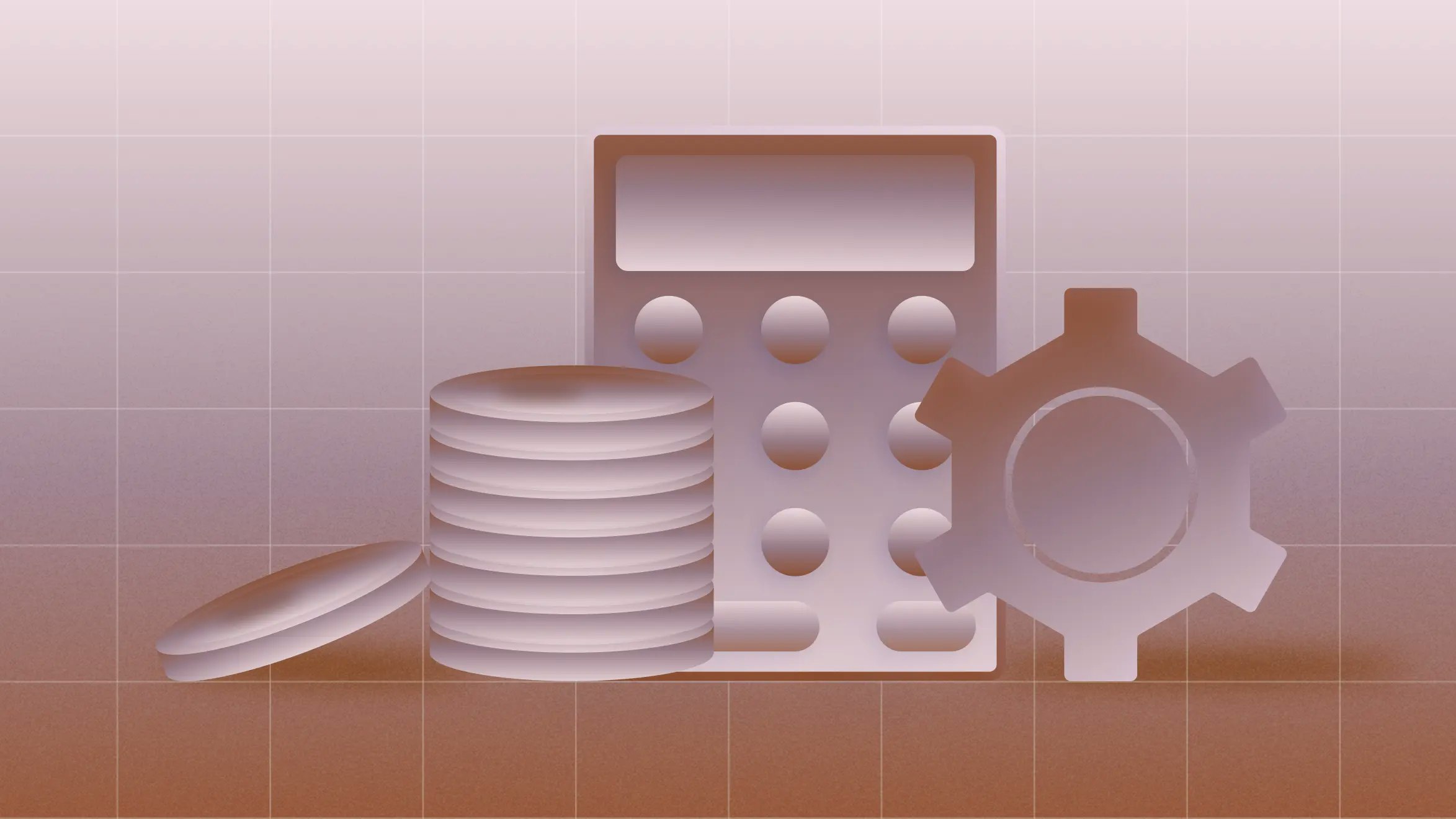A guide to retained earnings and how to calculate them

Retained earnings might not sound exciting, but this balance sheet number tells one of the most important stories about your business. It shows how much profit you’ve kept in the company after paying all of your expenses, taxes, and dividends. In other words, retained earnings are the portion of your earnings that can help you build something bigger.
Understanding retained earnings isn’t just about accounting. It also helps you to see the full picture of your company’s financial performance and make smarter decisions with the profits you’ve worked hard to earn.
What are retained earnings?
Retained earnings are the portion of your profits that aren’t distributed as dividends but, instead, stay within the business.
Think of your company’s flow of money:
Revenue → Expenses → Net income → Retained earnings (or distributed as dividends)
The difference between what you bring in (revenue) and what you spend (expenses) is your net income. Once you have net income, you can either distribute it to shareholders or keep it in the company to reinvest. The portion you keep becomes your retained earnings.
Tracking retained earnings matters because seeing cumulative profit over time shows not only how much money your business made in one period, but also how much you’ve held onto. That makes this metric a powerful signal of long-term business health.
For founders and operators, retained earnings tell you three important things:
- Profitability: Is your business consistently generating earnings beyond expenses?
- Discipline: Are you managing cash wisely and keeping enough in the business to grow sustainably?
- Potential: Do your financial statements show momentum that could attract investors or lenders?
Think of retained earnings as your company’s rainy day fund and reinvestment fuel. These earnings give you flexibility when new opportunities or challenges arise.
The statement of retained earnings
You may also see a document called the statement of retained earnings. This statement summarizes changes in the retained earnings over a specific accounting period. It starts with your beginning balance, adds net income, subtracts dividends, and ends with your closing retained earnings figure.
The statement of retained earnings is a bridge between your income statement and your balance sheet, showing how your profit turned into growth capital.
What to do with your retained earnings
Healthy retained earnings give your company options. They’re the financial cushion that lets you operate from a place of strength, instead of scarcity.
Here are some of the most common ways businesses use retained earnings:
- Reinvest in operations or expansion. Hire new team members, upgrade equipment, or launch new products.
- Build cash reserves. Set aside funds for slow seasons or unexpected expenses.
- Pay down debt. Reducing liabilities can strengthen your balance sheet and improve your borrowing power.
- Distribute dividends. Share a portion of profits with investors or founders once you’ve reached a comfortable cash position.
How you should use your retained earnings depends on your business stage. Early-stage companies often reinvest every dollar back into growth, while mature businesses balance reinvestment with shareholder returns.
How to calculate retained earnings
There’s a straightforward formula for calculating retained earnings:
Beginning Retained Earnings + Net Income (or Loss) – Dividends = Ending Retained Earnings
Step-by-step breakdown:
- Start with your beginning retained earnings.
This is the last period’s ending balance, usually listed on your prior balance sheet.
- Add your net income (or subtract your net loss).
You’ll find this number on your current income statement. It reflects how much profit or loss you made during the period.
- Subtract any dividends paid out to shareholders.
These are profits distributed to owners. The remainder stays in the business as retained earnings.
Example calculation
Let’s walk through a simple scenario for a small business over two years:
Year 1:
- Beginning retained earnings: $0
- Net income: $50,000
- Dividends paid: $10,000
- Ending retained earnings: $40,000
Year 2:
- Beginning retained earnings: $40,000
- Net income: $60,000
- Dividends paid: $15,000
- Ending retained earnings: $85,000
After two years, the retained earnings total $85,000. That’s how much profit the business has cumulatively reinvested instead of distributed.
If retained earnings are negative, that represents accumulated losses. This is common for new or quickly scaling companies that are still investing heavily in growth.
For a deeper breakdown on how retained earnings fit into your broader financials, check out our guide to building a balance sheet (or build your own balance sheet using this template).
Where to find retained earnings on the balance sheet
You’ll find retained earnings in the shareholders’ equity section of your balance sheet, typically below paid-in capital.
Shareholders’ equity | Amount |
Common stock | $50,000 |
Additional paid-in capital | $150,000 |
Retained earnings | $85,000 |
Total equity | $285,000 |
Retained earnings are cumulative. They grow or shrink based on your company’s performance each period. It’s an accounting measure that reflects how much profit has been reinvested in your business over time.
Variations to note
- Early-stage startups often show negative retained earnings because they’re reinvesting aggressively before generating consistent profit.
- Bootstrapped companies may rely heavily on retained earnings to fund growth, instead of outside capital.
- Mature companies usually have steady, positive retained earnings, which demonstrates long-term stability.
Why retained earnings matter — especially for small businesses
For small businesses and startups, retained earnings are a mirror reflecting the company’s financial and operational health.
Here’s why retained earnings are important, and how they can impact your decision-making and opportunities.
1. Signaling to investors or lenders
Consistent, positive retained earnings show the business can generate — and keep — profits. Having retained earnings signals that your company is financially disciplined and capable of sustainable growth.
2. Strengthening decision-making power
When you have healthy retained earnings, your business gains flexibility. You can fund new initiatives, cover short-term cash flow gaps, or take calculated risks, without seeking outside financing.
3. Supporting operational discipline
You may have retained earnings on paper, but not enough liquidity to spend freely. Understanding how cash moves through your business is essential. (For more insights, learn what the cash flow statement is, and why it matters.)
4. Offering perspective on losses
Negative retained earnings aren’t necessarily a red flag. This metric often reflects strategic reinvestment, especially for startups prioritizing market share, R&D, or product development.
5. Fueling a growth mindset
Businesses with strong retained earnings have more control over their future. They can move faster, weather downturns, and make investments on their own terms.
How to manage retained earnings effectively
Understanding retained earnings is step one. Managing them wisely helps your business thrive.
Here’s how to approach managing retained earnings:
- Review your retained earnings monthly. This keeps you connected to your company’s true profitability and makes trends easier to spot.
- Balance reinvestment with liquidity. Keep enough retained profit in cash to maintain flexibility while still funding growth.
- Use data to guide decisions. Tie retained earnings to metrics like return on invested capital (ROIC) or working capital ratio to see how effectively you’re deploying profits.
If you’re managing your books manually, tracking retained earnings can be tedious. Software, like Mercury’s accounting automation, automatically updates this figure every time you close the books, giving you an accurate view of your company’s performance.
The bottom line
Retained earnings help you track whether your business is not just making money, but also keeping it and using it wisely. This surplus income bridges the gap between profitability and growth. It also indicates how much of your financial success you’re reinvesting into the future.
When you understand retained earnings, you’ll start to see your business through an investor's eyes. You’ll gain the insight to decide whether to grow faster, distribute profits, or strengthen your balance sheet for what comes next.
With Mercury, you can automatically track retained earnings, link them to your balance sheet, and make confident, data-driven reinvestment decisions.
Explore how Mercury simplifies bookkeeping and improves financial clarity.



